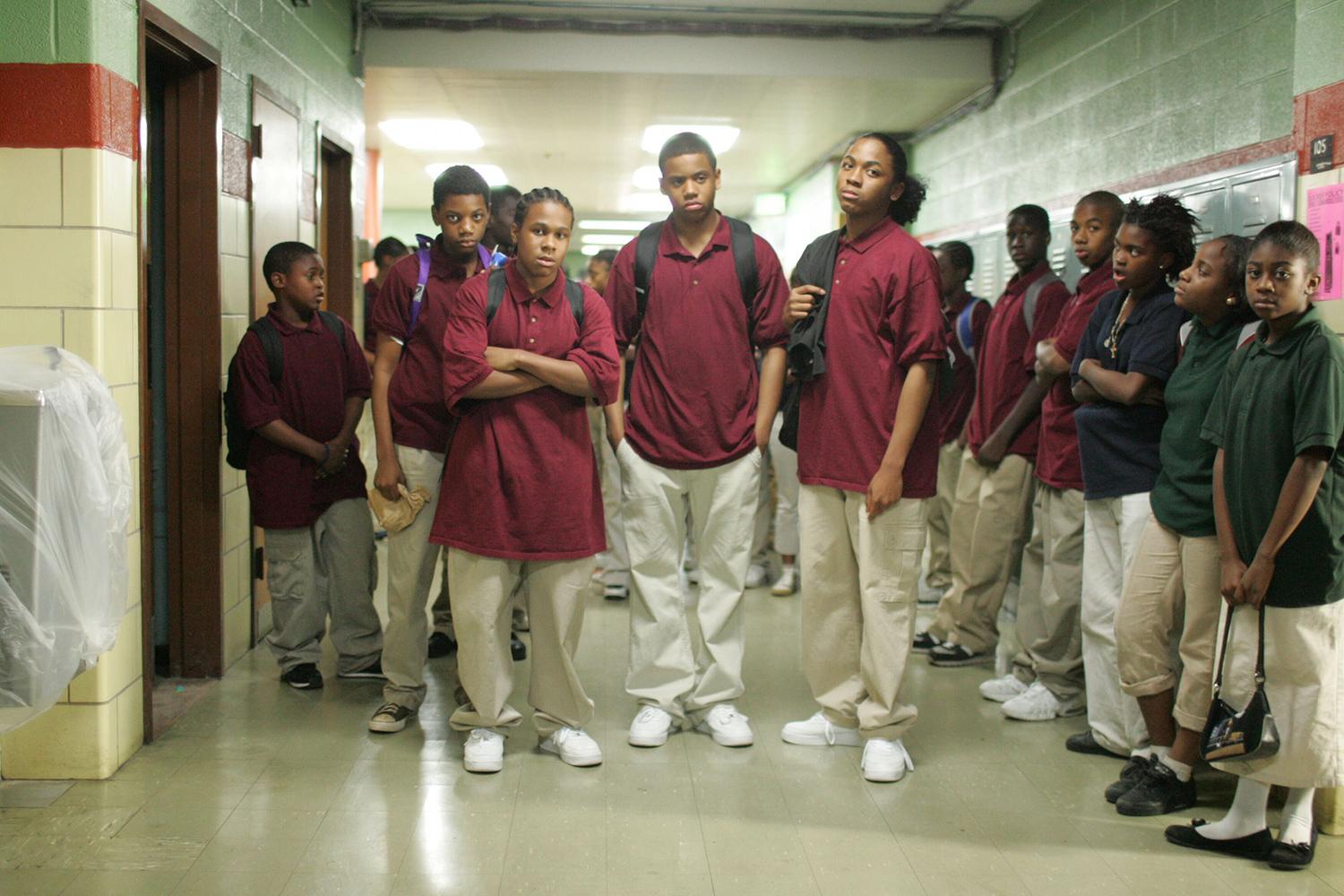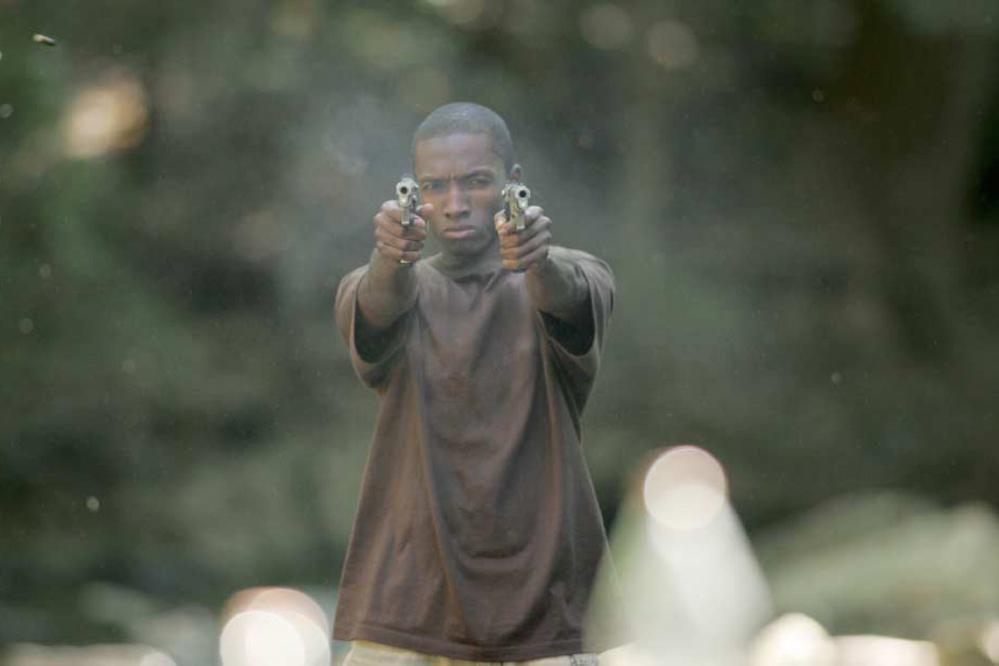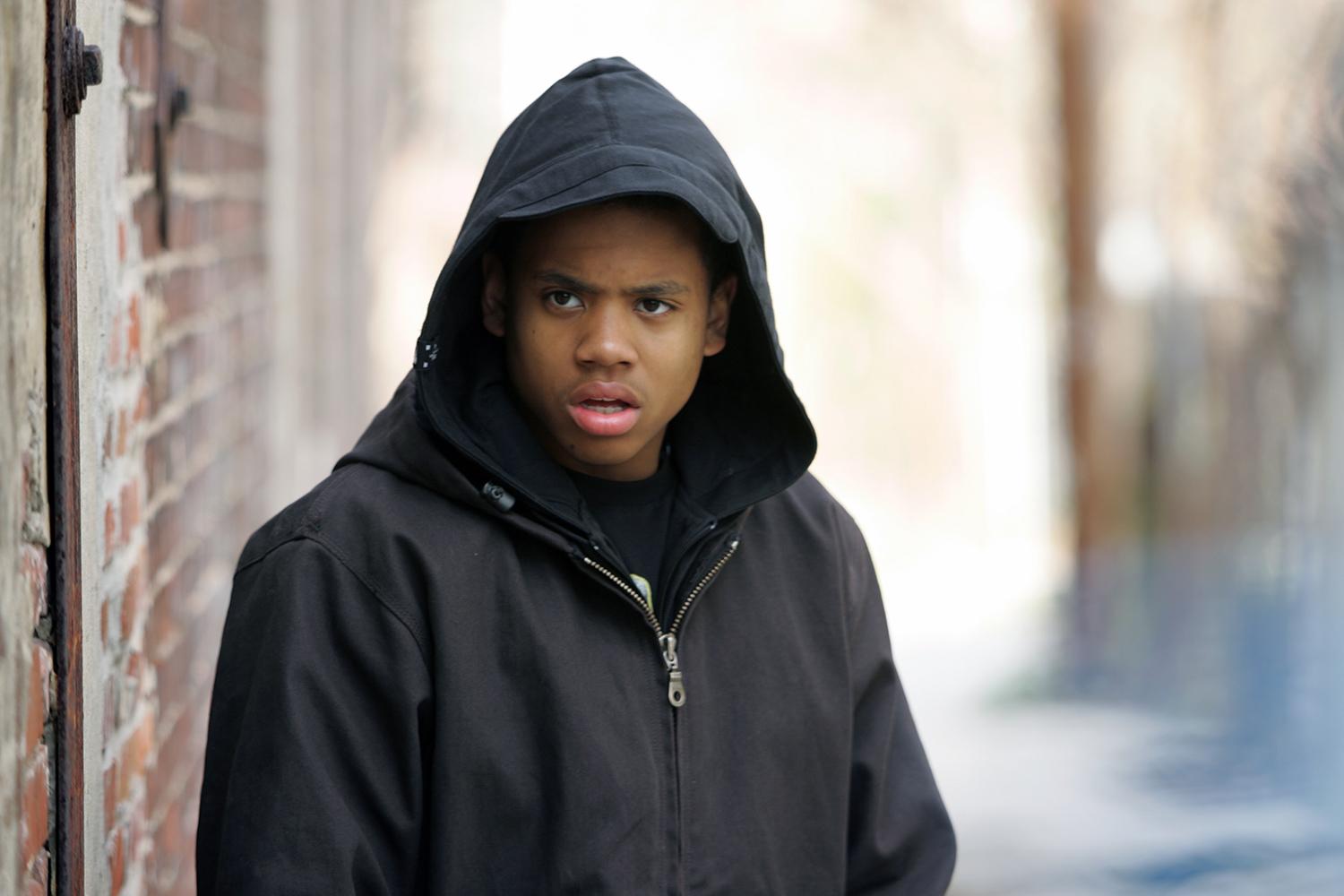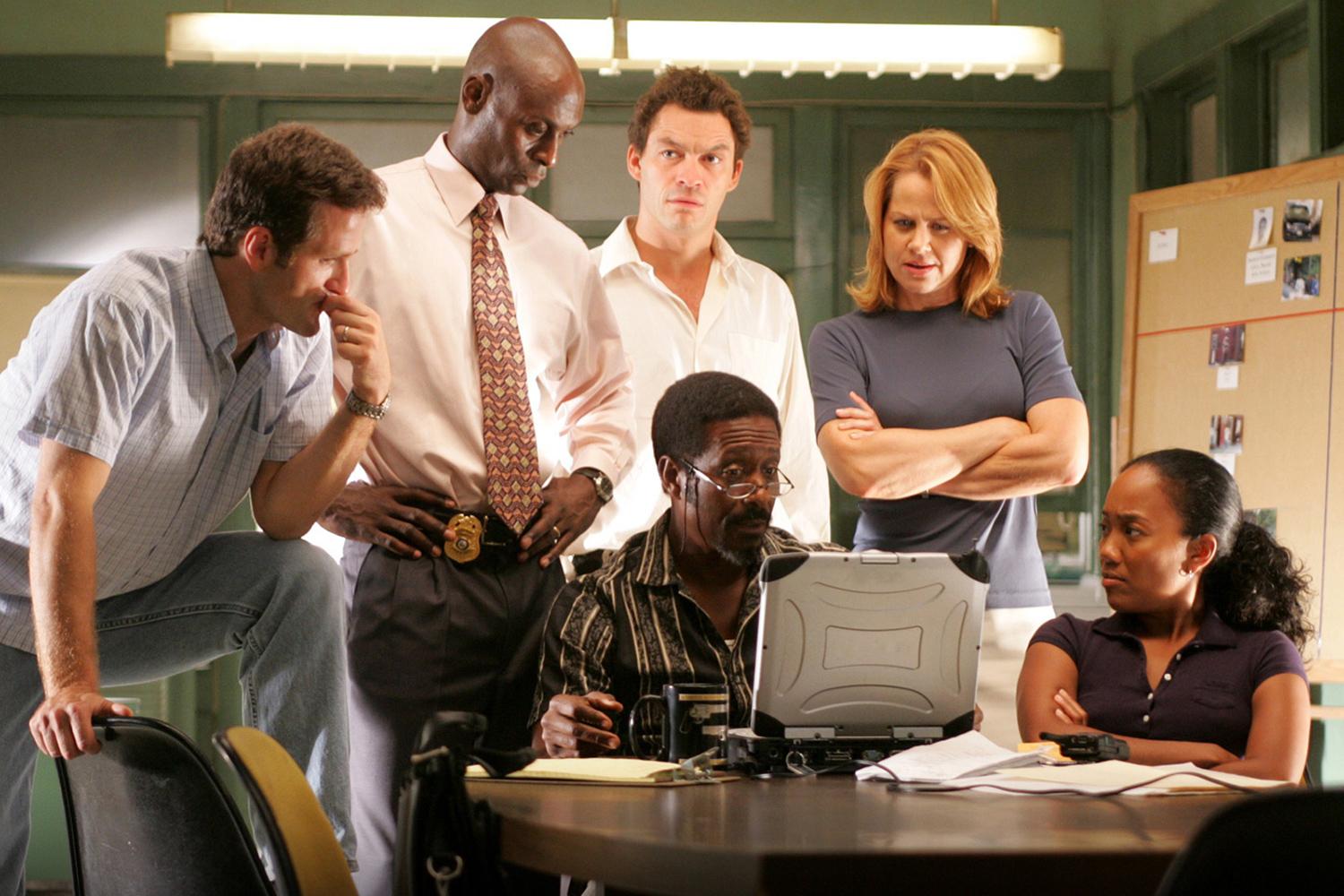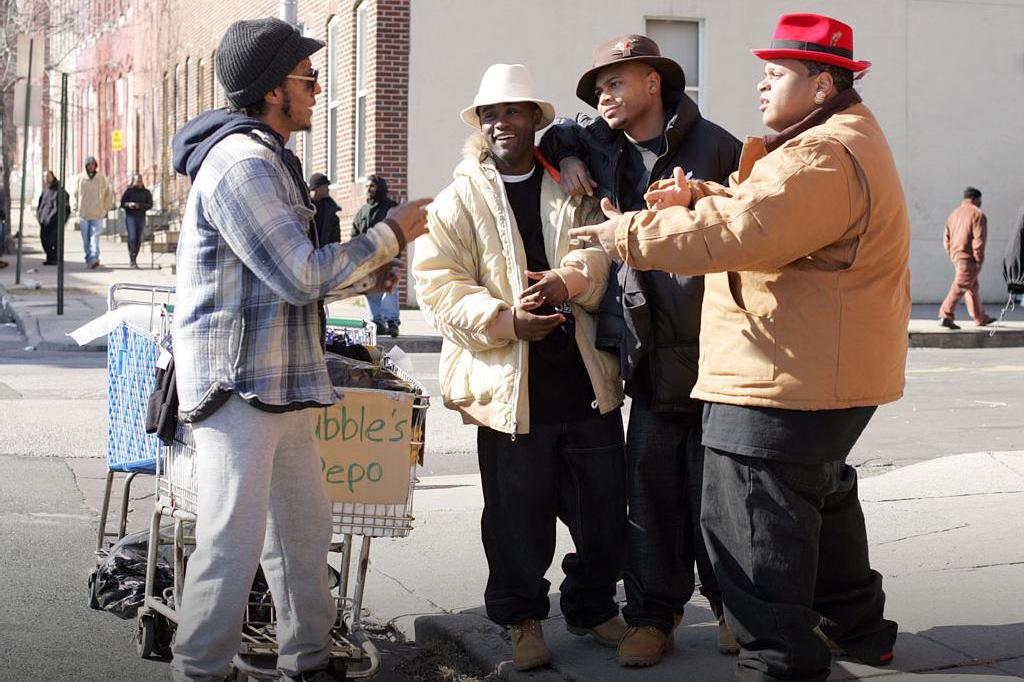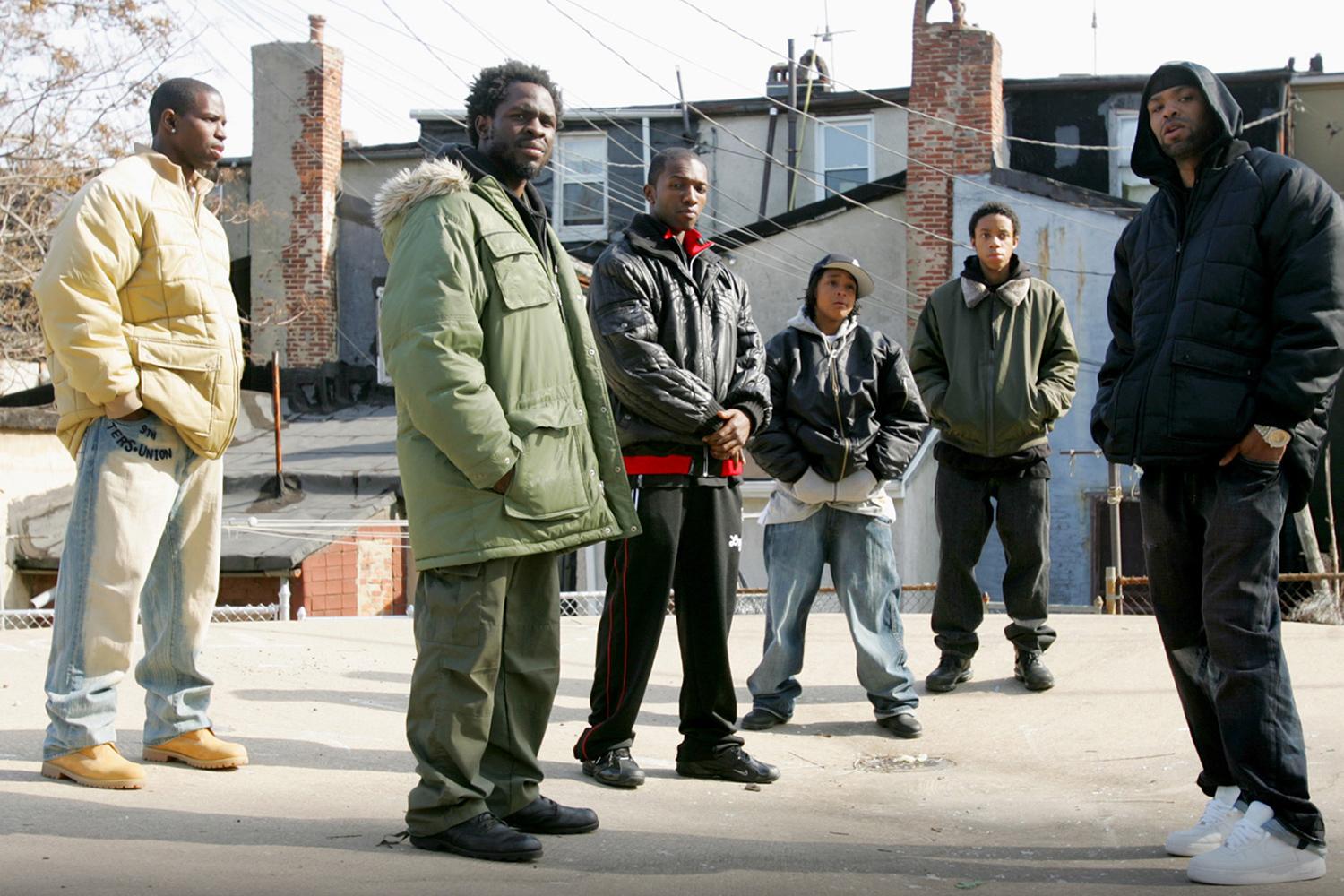
Don’t bother chugging any more of that nasty spiked eggnog — The Wire is all teed up to be your high-def holiday binge fix.
It’s time to round up your Wire-viewing task force: all 60 episodes of the acclaimed HBO drama have finally seen a high-definition upgrade.
Just in time for Christmas, a five-day, five-season, full-series marathon of the popular show starts December 26 at noon EST on HBO Signature, at a clip of one season per day through December 30. If you wanna take your warrant-watching fully mobile, you can catch all 60 episodes in full on HBO GO, also starting December 26.
And then, on January 5, The Wire: The Complete Series will be available in HD for full purchase on iTunes, Google Play, Xbox Video, and Vudu, with individual eps accessible through all of HBO’s Digital HD retailers. Meanwhile, Blu-ray fans will have to wait to get their dosage in box-set form until summertime.
“There’s something about the feel of it. It looks like you could reach out and touch it.”
This long-needed upgrade finally gives us the chance to see all the dark sides of Ballmurr — sorry, I meant Baltimore — in 16:9 full-frame HD. After getting an advance HD look at Season 1 — which features dingy interior basement scenes and location shoots in the local high-rises and courtyards — I’m pleased to report that the remastering team was wise enough to retain the signature grit that defined the show’s original 4:3 standard-def look instead of prettying up the joint too much.
“For something like The Wire, you need that grit of film,” notes Tristan Wilds, who played kid gangsta/budding boxer Michael Lee in Seasons 4 and 5. “There’s something about the feel of it. It looks like you could reach out and touch it, and there’s a certain level of realness that comes with that. You need to pick up the right things for whatever you need to shoot.”
Filming as much of the show on the streets of Charm City as possible played a major role in forging the look of The Wire. “I’ve heard where David [Simon, co-creator] has said Baltimore is a character in the show, and I think that was because we did a lot of location shoots,” observes Sonja Sohn, who played no-nonsense Detective Kima Greggs for all five seasons (which ran 2002–08). “All of the drug-trade side was never done on a soundstage. Things shot on those stages were various cop environments and the political stuff, for the most part.”

“Listen, David Simon and Ed Burns are geniuses!” Wilds told Digital Trends. “I don’t know to what extent, but they had everything how they wanted it formulated. They always knew what they wanted to do. And one of the smartest things they did was they didn’t tell us. They let us live life through the characters, as if every day was brand new. So we only found out things when we first got the script.”
He also loves that the show is being broadcast again on cable, this time from beginning to end. “The biggest thing I’m excited about is that it’s coming back on television,” says Wilds, who’s rewatching the show on his 60-inch HD Panasonic flatscreen and experiencing it in surround sound. “People will be able to turn their television on and see it again instead of searching for it on Netflix or buying the DVDs. It’s an amazing opportunity for people to actually understand and immerse themselves in the world of The Wire the way we first did.”
For her part, Sohn is putting in her Wire rewatch time via HBO GO on her MacBook Air. “I’m looking at it not as someone who’s enjoying the show, but as someone critiquing their work,” she laughs. “I’m going back to how I experienced it to see how the work actually translated — and it’s actually not as bad as I thought. I look at it and go, “Wow. I guess David was right. He told me, ‘Honestly, Sonja, we always got what we needed.’”
“With Omar’s death, you had to think it couldn’t have been anybody else. It had to be a woman or a child.”
She admits to feeling some pressure as being a fairly green actor on a top-shelf HBO show during its maiden season. “Yeah, HBO was the frickin’ pinnacle. It was my first television series ever, really early on in my career when I wasn’t all that experienced,” notes Sohn, who first came to notice in the Sundance-winning indie favorite Slam (1998). “The Wire is where I got my sea legs. That first year, there was a lot to get used to, and I was having some challenges. Now, when little things go popping off on a job, I go, ‘OK, I know what that is,’ and I keep it moving until it all sort of straightens out.”
Getting complete Wire scripts each week of shooting was pure manna. “We got a chance to read everything that was going on in that world at that moment,” says Wilds. “Man, every time we got a script, it was like getting a brand-new book. We would open it up and rip it apart: ‘Oh my God, this is happening! Yo, I can’t believe Dom Lombardozzi is walking in on the Mayor!’ It was the craziest things at the craziest times.” [Spoiler alert: While on security detail in Season 4, Herc walks in on Mayor Clarence Royce during a sex act in his office.]
Even a decade down the line, the language and jargon used on The Wire is still fairly current. “Oh, yeah, absolutely,” concurs Sohn. “A lot of the cop language hasn’t changed a lot, and a lot of the slang is specific to Baltimore. In the world, the language may change, but generally everybody can recognize the code words used for certain things, you know?”
One thing that gave Sohn a bit of a pause was learning that Kima was going to take a few bullets during a bust gone wrong near the end of Season 1 in “The Cost,” Episode 10. “Yeah, I sort of accidentally found out my character was going to get shot,” she clarifies. “That was probably the only thing I found out. It was in a conversation with another actor who knew, but I don’t want to say too much about who that was. I found out during the pilot. This actor had gotten the information in an offhand way.”
Did you think that was the end of the line for Kima? “No, I found out relatively quickly that it wasn’t going to go beyond getting shot — but trust me, I had heart palpitations for a bit.”
Meanwhile, Wilds, who was just a teenager when he joined the show in the education-breakdown-focused Season 4, had to tell his folks he was going to be shooting guns — and often. “Thank God for good parents, because my mom or dad would go, ‘They want me to sign off on what?’” he laughs.
“You root for the bad guys sometimes, when the good guys aren’t really that good.”
One of Michael’s biggest moments came near the end of Season 5 when he had to take out Felicia “Snoop” Pearson, one of the fiercest enforcers on the show, in “Late Editions,” Episode 9. “That was crazy,” he recalls. “I remember the first time I read it, when I was in the production office. And I was like, ‘Naw, this has gotta be a mistake!’ Now, you gotta understand — all of us, we were like a big family. And Snoop especially — when me and Snoop went out there, Snoop was the person who had my back, completely. That was like my big sister. I was like, ‘I gotta do what? Ummm… I don’t know how I’m gonna do that!’ But she was an amazing sport about it. She was like, ‘Come on little bro; you got this.’ And we got it.”
Wilds agrees one of the most chilling moments of the show came in the episode before that. In “Clarifications” (Season 5, Episode 8), Kenard, a kid from Michael’s crew, killed feared ghetto gunman Omar (Michael K. Williams) in a Korean-owned convenience store. “Coolest thing ever,” Wilds says. “With Omar’s death, you had to think it couldn’t have been anybody else. A man couldn’t have killed him. It had to be a woman or a child, someone that he doesn’t expect.”
Wilds is totally satisfied with Michael’s character arc. “There couldn’t have been a better ending,” he observes. ”He couldn’t have gotten his way out of there. He was already too deep in — he wasn’t gonna become a super-big drug kingpin; he’s too smart for that. The most he would have been was a Stringer Bell. He had a conscience. And he’s a killer, so the only rightful way for him to go was to be that Robin Hood — that person who gives to the poor, that Omar.”

Where would Michael be today? “I think Michael would still be in Baltimore — probably with his shotgun, but maybe with a different whistle.”
The Wire’s position in TV history is quite secure. “I think it’s one of those things where people will get a chance to see what urban decay was in a certain period of time — right now, in this information age,” theorizes Wilds. “This is something people 100 or even 200 years from now will be able to go back and watch and be like, ‘Wow, that’s how it was when my great-great-great grandfather was here.’ They’ll just feel and understand that connection with those characters, and they’ll see how you root for the bad guys sometimes, when the good guys aren’t really that good.”
Sohn sees The Wire as a show that influenced national policy in ways others shows never did before. “I would dare to say that The Wire had the most influence on public policy than any other television show,” she states. “Before The Wire, there was not nearly enough criticism out there on the failure of the war on drugs, which The Wire highlighted. Also, before the fourth season, there was not nearly enough focus on the educational system in this country. Right after the fourth season of The Wire, education became a huge national topic.”
“This show has impacted the sociopolitical landscape of our nation,” she continues. “You can see that in the advocacy and the changes in policy that are coming about now — this rising tide of folks lashing out and lashing back, solely as a result of this piece of media being out there. The Wire contributed to the swelling tide of massive protests, political action, and engagement around some very important issues.”
In the wake of its HD release, the legend and legacy of The Wire continues to grow as one of the best shows of all time — if not the best show. (And this is coming from someone who loved Breaking Bad from the very first second it aired.)
Watching The Wire in HD reinforces one undeniable fact — game’s the same, just got more fierce.
